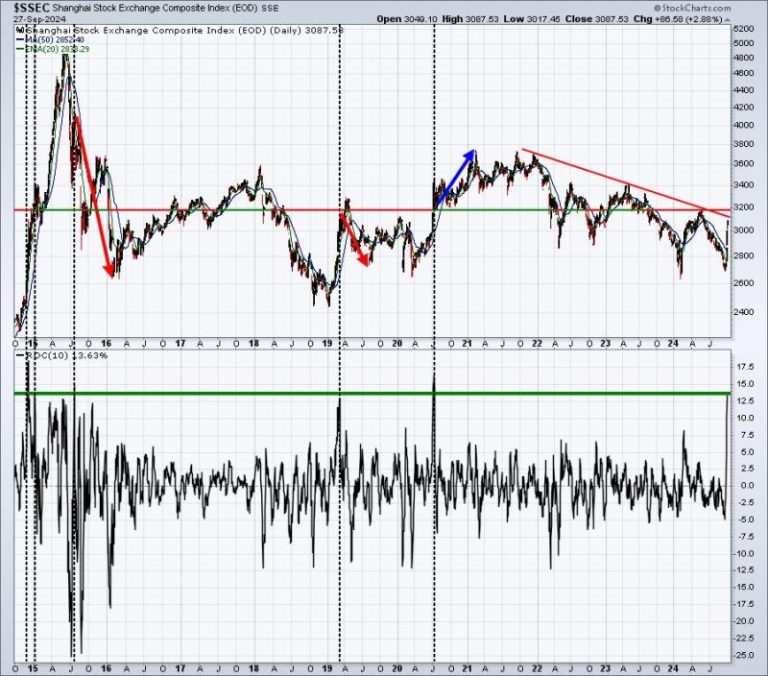After a strong showing in the Chinese financial markets last week, where the Shanghai Composite Index rose by over 5%, investors are speculating on whether this positive trend can be maintained going forward. The surge in Chinese stocks was primarily driven by several factors, including positive economic data, optimism surrounding the US-China trade negotiations, and supportive government policies.
One of the key drivers behind the recent strength in Chinese stocks is the encouraging economic data coming out of the country. Data released last week showed that China’s manufacturing sector expanded at a faster pace than expected, pointing to a potential pickup in economic growth. This has reassured investors who were concerned about the impact of the trade tensions and slowing global growth on the Chinese economy.
Another factor that contributed to the positive sentiment in Chinese markets last week was the progress in the US-China trade negotiations. Both countries have been engaging in talks to resolve their trade disputes, and any signs of progress in this area have helped lift investor confidence. The recent decision by both sides to delay the implementation of additional tariffs has provided a much-needed boost to market sentiment.
Furthermore, the Chinese government has been implementing various policies to support economic growth and stabilize financial markets. These measures include tax cuts, infrastructure spending, and easier monetary policy. Such proactive steps by the authorities have been well-received by investors and have played a role in the recent rally in Chinese stocks.
Despite the recent strength in Chinese markets, there are also a few factors that could potentially derail this positive momentum. One of the key risks is the uncertain outcome of the US-China trade negotiations. If talks between the two countries break down or if tensions escalate further, it could weigh on investor sentiment and lead to a pullback in Chinese stocks.
Moreover, the ongoing concerns about the Chinese economy, including high debt levels, slowing growth, and structural challenges, could also pose a threat to the sustainability of the recent rally. Investors will be closely watching economic indicators and government policies to gauge the health of the Chinese economy and the prospects for its financial markets.
In conclusion, while the recent strength in Chinese stocks has been driven by positive economic data, progress in trade negotiations, and supportive government policies, there are risks and challenges that could potentially limit the sustainability of this rally. Investors will need to carefully monitor developments in the US-China trade talks, as well as domestic economic indicators, to assess the outlook for Chinese markets in the coming weeks and months.



